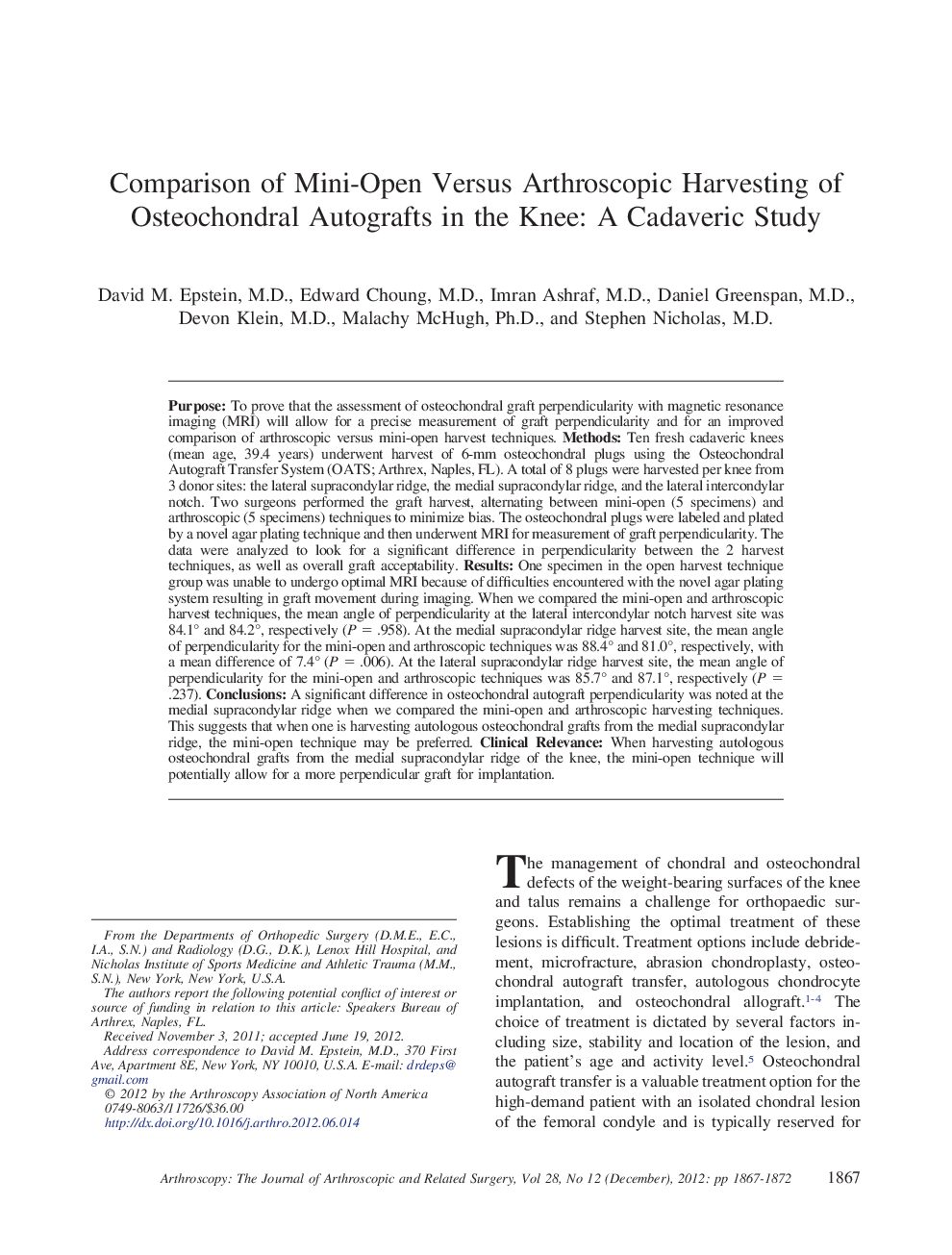| Article ID | Journal | Published Year | Pages | File Type |
|---|---|---|---|---|
| 4044043 | Arthroscopy: The Journal of Arthroscopic & Related Surgery | 2012 | 6 Pages |
PurposeTo prove that the assessment of osteochondral graft perpendicularity with magnetic resonance imaging (MRI) will allow for a precise measurement of graft perpendicularity and for an improved comparison of arthroscopic versus mini-open harvest techniques.MethodsTen fresh cadaveric knees (mean age, 39.4 years) underwent harvest of 6-mm osteochondral plugs using the Osteochondral Autograft Transfer System (OATS; Arthrex, Naples, FL). A total of 8 plugs were harvested per knee from 3 donor sites: the lateral supracondylar ridge, the medial supracondylar ridge, and the lateral intercondylar notch. Two surgeons performed the graft harvest, alternating between mini-open (5 specimens) and arthroscopic (5 specimens) techniques to minimize bias. The osteochondral plugs were labeled and plated by a novel agar plating technique and then underwent MRI for measurement of graft perpendicularity. The data were analyzed to look for a significant difference in perpendicularity between the 2 harvest techniques, as well as overall graft acceptability.ResultsOne specimen in the open harvest technique group was unable to undergo optimal MRI because of difficulties encountered with the novel agar plating system resulting in graft movement during imaging. When we compared the mini-open and arthroscopic harvest techniques, the mean angle of perpendicularity at the lateral intercondylar notch harvest site was 84.1° and 84.2°, respectively (P = .958). At the medial supracondylar ridge harvest site, the mean angle of perpendicularity for the mini-open and arthroscopic techniques was 88.4° and 81.0°, respectively, with a mean difference of 7.4° (P = .006). At the lateral supracondylar ridge harvest site, the mean angle of perpendicularity for the mini-open and arthroscopic techniques was 85.7° and 87.1°, respectively (P = .237).ConclusionsA significant difference in osteochondral autograft perpendicularity was noted at the medial supracondylar ridge when we compared the mini-open and arthroscopic harvesting techniques. This suggests that when one is harvesting autologous osteochondral grafts from the medial supracondylar ridge, the mini-open technique may be preferred.Clinical RelevanceWhen harvesting autologous osteochondral grafts from the medial supracondylar ridge of the knee, the mini-open technique will potentially allow for a more perpendicular graft for implantation.
